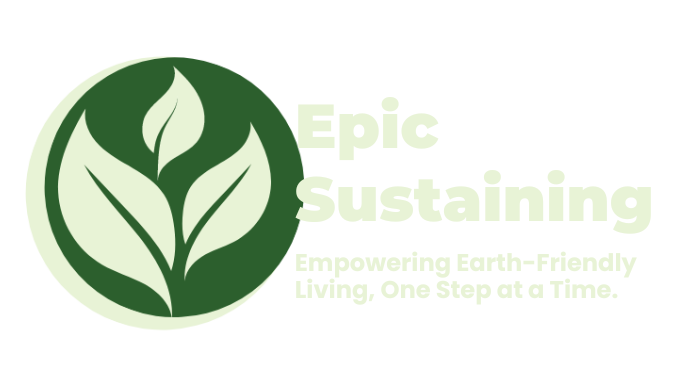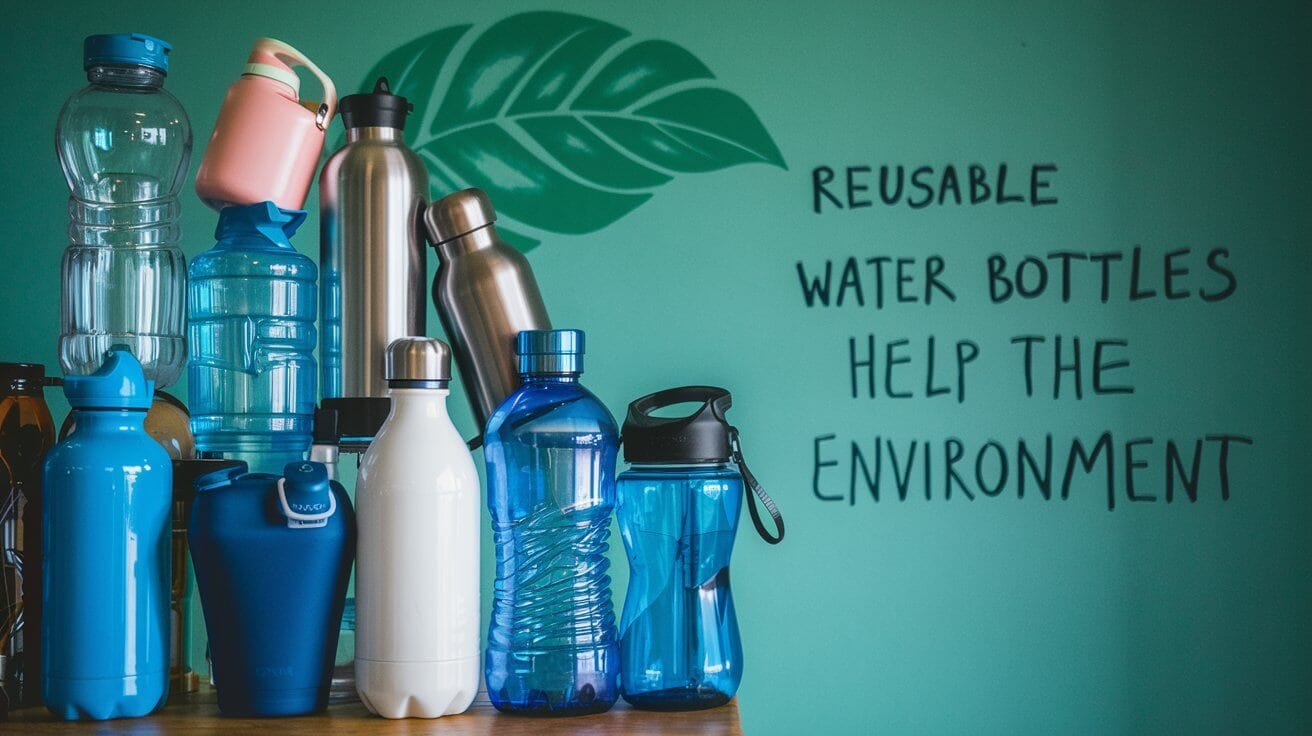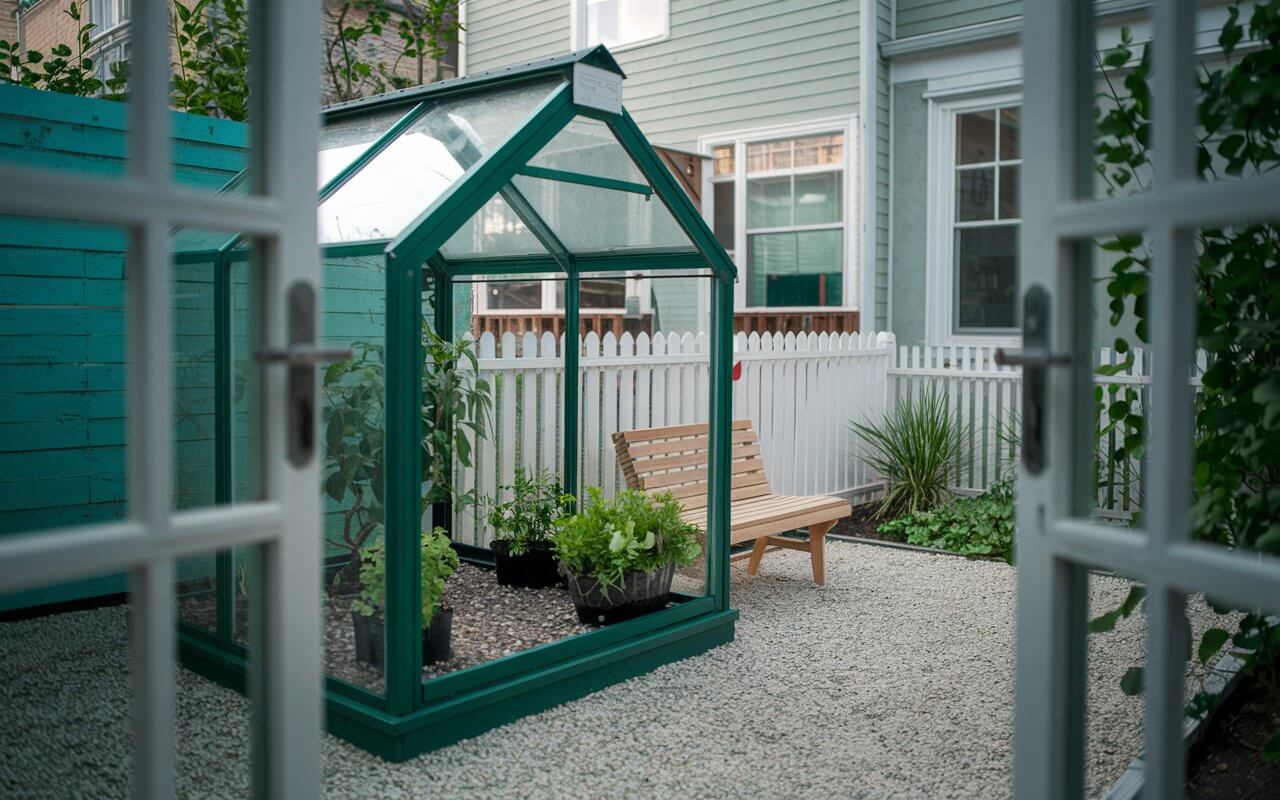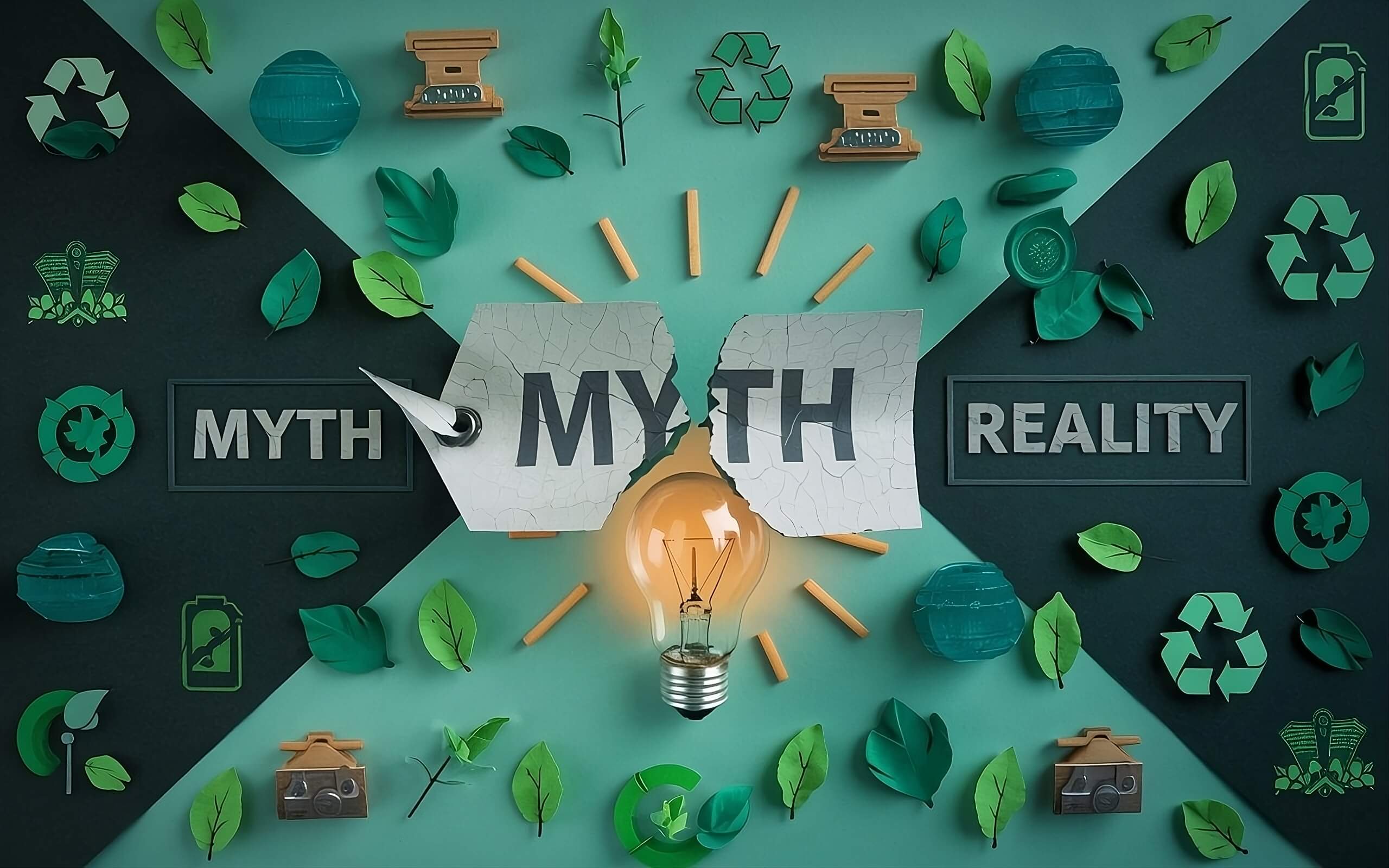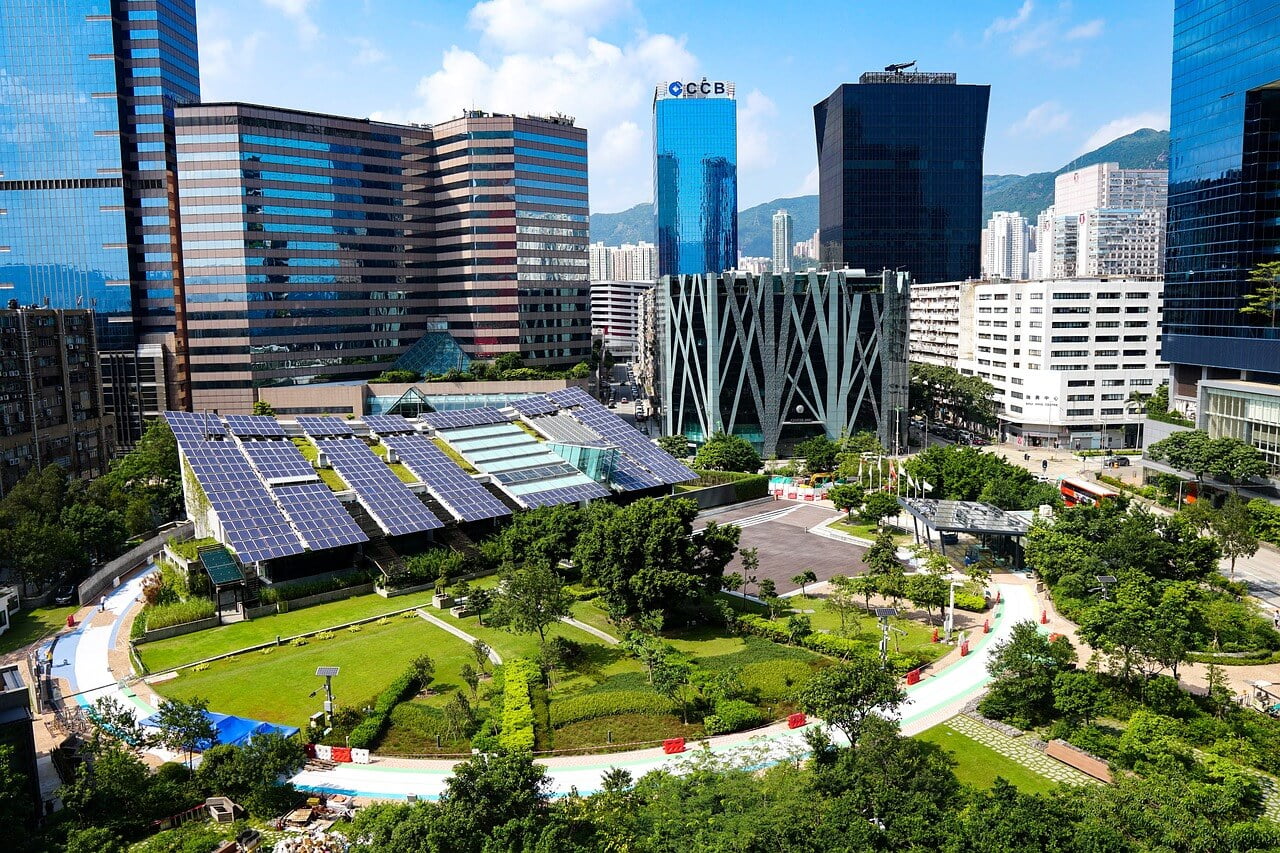Are you ready to transform your daily habits into powerful actions for the planet?
In 2024, adopting sustainable lifestyle habits is not just a trend, it’s a necessity for everyone who cares about our Earth.
Imagine making small, manageable changes that lead to significant environmental benefits.
From reducing waste to conserving energy, every step counts!
Consider this:
- A single person switching to reusable bags can prevent 500+ plastic bags from entering landfills each year.
- Using a refillable water bottle can save an average of 156 plastic bottles annually.
- Turning off lights when not in use can reduce household energy consumption by up to 15%.
These aren’t just feel-good stats, they’re proof that your everyday choices matter.
Dive into our guide on 22 Essential Sustainable Lifestyle Habits for 2024 and discover how you can make a difference without overhauling your life.
Key Takeaways
- Small Changes, Big Impact: Simple actions like using reusable bags and conserving water can lead to significant environmental benefits.
- Energy Efficiency: Upgrading to energy-efficient appliances and using LED lighting can drastically reduce energy consumption and costs.
- Sustainable Transportation: Opt for public transport, biking, or walking to cut down on carbon emissions.
- Mindful Consumption: Support local and organic products, reduce meat consumption, and shop second-hand to minimize waste.
- Community Engagement: Participate in clean-up events and educate others to amplify your impact on sustainability.

Page Contents
Toggle1. Upgrade to Energy-Efficient Appliances for Long-Term Savings
Want to slash your energy bills and shrink your carbon footprint?
It’s time to give your old energy-guzzling appliances the boot and welcome some sleek, efficient newcomers.
Choosing the Right Appliances
When shopping for new appliances, keep an eye out for these eco-friendly badges of honor:
- Energy Star: This certification is the gold standard for energy efficiency in the U.S.
- EPEAT: Look for this global ecolabel for electronics.
Pro tip: Compare energy consumption labels before you buy. It’s like a nutritional label for your appliances!
| Appliance Type | Potential Energy Savings |
|---|---|
| Refrigerator | Up to 15% |
| Washing Machine | Up to 25% |
| Dishwasher | Up to 12% |
| Air Conditioner | Up to 20% |
Maintenance Tips for Efficiency
Keep your appliances running like eco-friendly champs with these quick tips:
- Clean refrigerator coils every six months to improve efficiency by up to 30%.
- Replace HVAC filters monthly during peak seasons.
- Clean the lint filter in your dryer after every use to improve air circulation.
- Descale your kettle and coffee maker regularly to prevent energy waste from mineral buildup.
Remember, an efficient appliance is a happy appliance. Show them some love, and they’ll return the favor in energy savings!
2. Optimize Your Home’s Heating and Cooling to Reduce Waste
Ready to put your home’s climate control on an eco-diet?
Let’s turn your living space into a lean, green, temperature-regulating machine!
Improve Home Insulation
Think of insulation as a cozy sweater for your house. Here’s how to wrap it up tight:
- Insulate walls, floors, and ceilings: This can reduce heating needs by up to 60%, according to the U.S. Department of Energy.
- Upgrade to double-glazed windows: These bad boys can cut heat loss by up to 50% compared to single-pane windows.
- Seal those sneaky air leaks: Check around windows, doors, and any openings for pipes or wires. A properly sealed home can save 15% on heating and cooling costs.
Smart Thermostats and Zoning
Welcome to the 21st century of home climate control:
- Smart thermostats: These clever devices learn your habits and adjust temperatures automatically. They can save you up to 15% on your heating and cooling bills.
- Zoning systems: Why heat or cool empty rooms? Zoning lets you control temperatures in different areas of your home. It’s like having a personal climate butler for each room!
Pro tip: Set your thermostat to 7-10°F lower for 8 hours a day (like when you’re asleep or at work). This simple trick can save you up to 10% annually on your heating and cooling costs.
| Action | Potential Energy Savings |
|---|---|
| Proper insulation | Up to 60% on heating |
| Double-glazed windows | Up to 50% on heat loss |
| Sealing air leaks | Up to 15% on HVAC costs |
| Smart thermostats | Up to 15% on HVAC bills |
A well-insulated, smartly controlled home isn’t just good for your wallet, it’s a bear hug for the planet.
3. Install Low-Flow Fixtures to Conserve Water Easily
Think saving water means saying goodbye to your luxurious showers?
Think again! Low-flow fixtures are here to prove that less can indeed be more.
Water-Efficient Fixtures
Let’s dive into some water-saving superstars:
- Aerators on faucets: These tiny heroes can reduce water flow by 30% or more without compromising pressure. It’s like magic, but it’s science!
- Dual-flush toilets: Choose between a light flush (around 0.8 gallons) and a heavy flush (1.6 gallons). The average dual-flush toilet uses 26% less water than a standard model.
- Low-flow showerheads: Enjoy your shower guilt-free! These can save up to 2,700 gallons of water per year for a family of four.
Retrofitting Existing Fixtures
Not ready for a full bathroom makeover? No problem! Try these quick fixes:
- Retrofit existing fixtures: Add low-flow adapters to your current faucets and showerheads. It’s like giving your fixtures a water-saving superpower!
- Install a greywater system: Reuse water from sinks and showers for non-potable uses like toilet flushing or garden watering. It’s recycling but for water!
Check out these water-saving stats:
| Fixture Type | Standard Use | Low-Flow Use | Potential Savings |
|---|---|---|---|
| Faucet | 2.2 gpm | 1.5 gpm | 32% |
| Showerhead | 2.5 gpm | 2.0 gpm | 20% |
| Toilet | 1.6 gpf | 1.28 gpf | 20% |
Pro tip: Conduct a water audit of your home. Many local water utilities offer free audits to help you identify areas for improvement.
4. Harvest Rainwater for Gardening and Other Uses
Why let all that free water from the sky go to waste? It’s time to catch those drops and put them to work!
Rainwater Collection Systems
Let’s dive into some water-catching strategies:
- Rain Barrels: The simplest way to start. A typical 55-gallon rain barrel can fill up during a single moderate rainfall!
- First Flush Diverter: This nifty device improves water quality by diverting the initial, dirtier runoff. It’s like a bouncer for your rainwater system!
- Underground Cisterns: For the rainwater harvesting pros. These can store thousands of gallons, perfect for larger properties or drier climates.
Rainwater Usage Tips
Now that you’ve caught it, here’s how to make the most of your liquid gold:
- Garden Irrigation: Your plants will love the natural, chlorine-free rainwater. It’s like spa water for your garden!
- Car Washing: Save the treated water for drinking and use rainwater to keep your ride shiny.
- Toilet Flushing: Why use drinking water to flush? Rainwater does the job just as well.
- Laundry: Some washing machines can be connected to rainwater systems. Clean clothes, clean conscience!
Pro tip: Implement a drip irrigation system in your garden. It can use 30-50% less water than traditional sprinkler systems.
Check out these rainy-day savings:
| Use | Potential Water Savings |
|---|---|
| Garden Watering | Up to 1,300 gallons per year |
| Toilet Flushing | Up to 13,000 gallons per year |
| Car Washing | Up to 100 gallons per wash |
It’s a refreshing way to reduce demand for municipal water supplies and decrease stormwater runoff. So next time it rains, don’t complain; celebrate your free water delivery!
5. Switch to LED Lighting for Instant Energy Savings
Ready to light up your life (and save energy) in a flash? It’s time to make the switch to LED lighting!
Benefits of LED Lights
LEDs aren’t just a bright idea, they’re a brilliant one. Here’s why:
- Energy Efficiency: LEDs use up to 75% less energy than incandescent bulbs. That’s like going from a gas-guzzling SUV to an electric scooter!
- Longevity: LEDs can last up to 25 times longer than traditional bulbs. That’s fewer trips up the ladder for you!
- Better Color Rendering: LEDs offer a range of color temperatures, from warm and cozy to cool and invigorating.
- Instant Full Brightness: No more waiting for your lights to “warm up”. LEDs are ready when you are!
- Lower Heat Emission: LEDs stay cool, reducing your cooling costs in summer. It’s like giving your AC a little vacation.
LED Lighting Design Tips
Let’s shed some light on how to use LEDs effectively:
- Use Dimmable LEDs: Perfect for creating ambiance or saving even more energy when full brightness isn’t needed.
- Choose the Right Color Temperature:
- Warm white (2700-3000K): Cozy for living rooms and bedrooms
- Cool white (3500-4100K): Great for kitchens and workspaces
- Daylight (5000-6500K): Ideal for reading areas or color-critical tasks
- Consider Smart LED Bulbs: Control your lights with your smartphone or voice commands. Welcome to the future!
Check out these illuminating stats:
| Bulb Type | Lifespan (hours) | Energy Use (60W equivalent) | Annual Energy Cost* |
|---|---|---|---|
| Incandescent | 1,000 | 60W | $4.80 |
| CFL | 8,000 | 14W | $1.12 |
| LED | 25,000 | 10W | $0.80 |
Pro tip: Start by replacing your most-used light fixtures with LEDs for maximum impact. Your energy bill will thank you!
6. Use Public Transportation to Cut Down on Carbon Emissions
Ready to shrink your carbon footprint without shrinking your lifestyle? Hop aboard the public transportation express!
Environmental Impact of Public Transit
Let’s break down why public transit is a green machine:
- Reduced Emissions: A full bus can take 40-50 cars off the road. That’s like giving the atmosphere a breath of fresh air!
- Lower Energy Consumption: Buses and trains use 45% and 76% less energy per passenger mile than private cars, respectively.
- Decreased Traffic Congestion: Fewer cars mean less time idling in traffic, further reducing emissions. It’s a win-win!
- Sustainable Urban Development: Good public transit encourages compact, walkable communities. It’s like city planning with a green thumb!
Maximizing the Benefits of Public Transit
Here’s how to become a public transportation pro:
- Combine Modes: Use the bus or train for long distances, then walk or bike for the “last mile”. It’s like a green transportation cocktail!
- Use Transit Apps: Plan your route, get real-time updates, and never miss a connection. Technology makes transit a breeze!
- Consider a Transit Pass: Many cities offer discounted monthly or annual passes. It’s like a VIP ticket to sustainability!
- Work or Read While Commuting: Turn travel time into productive time. Multitasking for the win!
Check out these transit triumphs:
| Mode of Transport | CO2 Emissions per Passenger Mile (grams) |
|---|---|
| Single Occupancy Vehicle | 404 |
| Bus (Full) | 89 |
| Rail (Full) | 52 |
Pro tip: If your workplace offers commuter benefits, take advantage of them! Many employers provide pre-tax transit passes or other incentives for using public transportation.
7. Walk or Bike to Work for Health and Sustainability
Ditch the car and embrace active transportation! Walking or biking to work isn’t just good for the planet, it’s a game-changer for your health and wallet too.
Benefits of Active Transportation
- Slash Your Carbon Footprint: Switching from driving to walking or biking can cut your carbon emissions by up to 67%.
- Boost Your Health: Regular cycling can lower your risk of cardiovascular disease by 46%.
- Save Money: The average American spends $9,666 annually on car ownership. Imagine the savings when you switch to two wheels or your own two feet!
- Reduce Traffic Congestion: One bike lane can transport 7-12 times more people per hour than a car lane.
Safety Tips for Walking and Biking
- Gear Up: Wear reflective clothing and use bike lights, especially during low-light conditions.
- Follow Traffic Rules: Obey traffic signals and use hand signals when turning.
- Plan Your Route: Choose paths with dedicated bike lanes or low-traffic streets.
- Stay Alert: Keep your eyes on the road and avoid distractions like headphones.
- Maintain Your Bike: Regular tune-ups ensure your bike is safe and efficient.
Pro Tip: If your workplace is far away, try a hybrid approach. Park halfway and walk the rest, or use public transport for part of the journey and bike the last mile. Every step (or pedal) counts!
8. Drive an Electric Vehicle to Reduce Fossil Fuel Dependence
Ready to give fossil fuels the boot?
Switching to an electric vehicle (EV) is like giving Mother Nature a big, eco-friendly hug.
Advantages of EVs
- Shrink Your Carbon Footprint: EVs emit 64% less carbon dioxide compared to gas-powered cars over their lifetime (ICCT, 2023).
- Say Goodbye to Gas Stations: The average EV owner saves $800-$1,000 per year on fuel costs.
- Low Maintenance, High Satisfaction: EVs have fewer moving parts, meaning less wear and tear. Enjoy up to 50% lower maintenance costs.
- Whisper-Quiet Rides: Experience the zen of noise-free driving and reduce noise pollution in your community.
Charging Infrastructure
- Home Charging:
- Install a Level 2 charger at home for convenient overnight charging.
- Some utility companies offer off-peak charging rates, saving you even more money.
- Public Charging:
- Use apps like PlugShare or ChargePoint to find nearby charging stations.
- Plan long trips around fast-charging stations for minimal downtime.
EV Myths Busted
| Myth | Reality |
|---|---|
| “EVs don’t have enough range” | Many modern EVs offer 200-300+ miles on a single charge |
| “Charging takes too long” | Fast chargers can add 100+ miles of range in just 30 minutes |
| “EVs are too expensive” | With tax incentives and lower operating costs, EVs can be cheaper in the long run |
Pro Tip: Pair your EV with home solar panels for the ultimate eco-friendly power combo. Charge your car with sunshine and watch your carbon footprint vanish!
9. Reduce Meat Consumption to Lower Your Carbon Footprint
Ready to take a bite out of climate change?
Your fork is mightier than you think! Reducing meat consumption is one of the most powerful ways to shrink your carbon footprint. Let’s dig into the meaty facts and juicy alternatives!
Benefits of a Plant-Based Diet
- Climate Champion: A recent study found that shifting to a plant-based diet can reduce food-related emissions by up to 73%.
- Water Warrior: Producing 1 kg of beef requires 15,000 liters of water, compared to just 250 liters for 1 kg of potatoes (Water Footprint Network, 2023).
- Land Lover: A plant-based diet requires 76% less land than a meat-based diet.
- Health Hero: Plant-based diets are associated with lower risks of heart disease, type 2 diabetes, and certain cancers.
Transitioning to a Plant-Based Diet
- Start with Meatless Mondays: One day a week can make a big difference!
- Embrace Plant-Based Proteins: Explore the world of legumes, tofu, tempeh, and seitan.
- Reimagine Your Plate: Make vegetables the star and meat the supporting act.
- Get Creative with Cuisines: Many global cuisines offer delicious vegetarian options.
Plant-Based Protein Powerhouses
| Food | Protein per 100g |
|---|---|
| Lentils | 9g |
| Chickpeas | 19g |
| Tofu | 8g |
| Quinoa | 4g |
| Seitan | 25g |
Pro Tip: Don’t stress about going 100% plant-based overnight. Every meat-free meal counts! Aim for progress, not perfection.
10. Buy Local and Organic Foods to Support Sustainable Agriculture
Get ready to become a sustainable food superhero!
Buying local and organic isn’t just a trend, it’s a delicious way to support your community and the planet. Let’s dig into the fresh facts and juicy benefits!
Support Local Farmers
- Join a CSA (Community Supported Agriculture) Program
- Receive fresh, seasonal produce directly from local farmers.
- Reduce food miles and support local economies.
- 78% of CSA members report eating a greater variety of fruits and vegetables.
- Attend Farmers’ Markets
- Build relationships with local producers.
- Enjoy fresher, more flavorful produce.
- Farmers’ markets generate 3x more economic activity for local communities compared to supermarkets.
Benefits of Organic Farming
- Biodiversity Boost: Organic farms support 30% more species on average compared to conventional farms (IFOAM Organics Europe Publications).
- Soil Savior: Organic farming practices increase soil organic matter, improving water retention and reducing erosion.
- Chemical-Free Zone: Organic farming avoids synthetic pesticides, promoting healthier ecosystems and reducing water pollution.
- Climate Champion: Organic farms emit 18% less carbon dioxide compared to conventional farms.
Local vs. Organic: Which to Choose?
| Factor | Local | Organic |
|---|---|---|
| Food Miles | Lower | Varies |
| Pesticide Use | Varies | None |
| Community Impact | High | Moderate |
| Seasonal Availability | High | Moderate |
Pro Tip: Start a small herb garden or join a community garden. Nothing beats the flavor and satisfaction of homegrown produce!
11. Minimize Food Waste with Mindful Meal Planning
Ready to become a food waste warrior?
Let’s turn your kitchen into a sustainability powerhouse!
Minimizing food waste isn’t just good for your wallet, it’s a crucial step in fighting climate change. Time to get smart about your scraps!
Shocking Food Waste Facts
- Globally, we waste 1.3 billion tons of food annually – that’s 1/3 of all food produced.
- Food waste generates 8% of global greenhouse gas emissions.
- The average American family wastes $1,600 worth of produce each year.
Techniques to Reduce Food Waste
- Master Meal Planning
- Practice FIFO (First In, First Out)
- Organize your fridge with older items in front.
- Use clear containers to easily see what you have.
- Embrace Imperfect Produce
- Don’t judge a veggie by its cover! Oddly shaped produce is just as nutritious.
- Look for “ugly produce” sections in your grocery store or join an imperfect produce delivery service.
- Learn Proper Food Storage
- Store fruits and vegetables correctly to extend their life.
- Use vacuum sealers for longer-term storage.
- Get Creative with Leftovers
- Transform yesterday’s dinner into today’s lunch.
- Host a “leftover potluck” with friends to share and reduce waste.
Composting for Sustainability
- Start a Home Composting System
- Choose between backyard composting, vermicomposting, or bokashi composting.
- Compost can reduce your household waste by up to 30% (EPA, 2024).
- Use Compost in Your Garden
- Enrich garden soil and reduce the need for chemical fertilizers.
- Composting can sequester 1.5-2.1 tons of CO2 per hectare per year (Rodale Institute, 2023).
Pro Tip: Freeze herbs in olive oil ice cubes, leftover wine for cooking, and overripe bananas for smoothies. Your future self will thank you!
12. Reduce Single-Use Plastics by Carrying Reusable Items
Say goodbye to disposable plastic and hello to a cleaner planet!
Reducing single-use plastics is one of the most impactful changes you can make for a sustainable lifestyle. Here’s how to make the switch:
Opt for Reusables
Ditch those pesky single-use items and embrace the reusable revolution:
- Invest in a set of reusable produce bags and storage containers. Look for options made from organic cotton or recycled materials.
- Carry a collapsible coffee cup for your daily caffeine fix. Some cafes even offer discounts for bringing your own cup!
- Pack a reusable water bottle to stay hydrated without the plastic waste. Stainless steel or glass options are durable and eco-friendly.
- Keep a set of reusable utensils in your bag or car for impromptu meals on the go.
Adopt Reusable Shopping Practices
Make your shopping trips plastic-free with these simple swaps:
- Bring your own shopping bags when going to stores. Keep a stash in your car or by the front door so you never forget.
- Choose cloth or mesh-produced bags instead of plastic ones. They’re washable and last for years.
- Buy in bulk using your own containers to reduce packaging waste.
- Support stores that offer package-free options or allow you to bring your own containers.
The Impact of Reducing Plastic
Embracing reusables isn’t just a trendy move, it’s a planet-saving one!
According to a study by the Ellen MacArthur Foundation, by 2050, there could be more plastic than fish in the ocean (by weight) if we don’t change our habits. By making the switch to reusables, you’re directly contributing to reducing this plastic pollution.
| Item | Number Used Annually (US) | Time to Decompose |
|---|---|---|
| Plastic Bags | 100 billion | 10-1000 years |
| Plastic Straws | 500 million | 200 years |
| Disposable Coffee Cups | 16 billion | 30 years |
Remember, every piece of plastic you avoid using is one less piece that ends up in our oceans or landfills. Your small actions add up to big changes for our planet!
13. Properly Recycle Materials to Keep Waste Out of Landfills
Recycling isn’t just about tossing everything in the blue bin and calling it a day.
It’s about being a recycling ninja, armed with knowledge and determination to keep our planet clean.
Let’s dive into the world of responsible recycling!
Recycling Best Practices
Master the art of recycling with these tips:
- Rinse and sort recyclables to avoid contamination. Clean items are more likely to be successfully recycled.
- Learn about local recycling rules to ensure proper disposal. What’s recyclable in one area might not be in another.
- Remove caps and lids before recycling bottles and jars.
- Flatten cardboard boxes to save space in recycling bins.
- Don’t bag your recyclables, most facilities prefer loose items.
Upcycling and Repurposing
Before you recycle, consider giving items a second life:
- Repurpose old items instead of throwing them away. That jam jar could become a trendy succulent planter!
- Get creative with DIY projects using recycled materials. Turn old t-shirts into reusable shopping bags or wine bottles into chic vases.
- Host a swap party with friends to exchange unwanted items.
- Donate usable items to thrift stores or charities.
The Recycling Reality Check
Here’s a sobering fact: according to the EPA, only about 32% of municipal solid waste in the U.S. was recycled or composted in 2018.
We can do better! By improving our recycling habits, we can significantly reduce the amount of waste ending up in landfills.
| Material | Recycling Rate (2018) | Energy Saved by Recycling |
|---|---|---|
| Aluminum Cans | 50.4% | 95% |
| Glass | 31.3% | 30% |
| Paper | 68.2% | 60% |
| Plastics | 8.5% | 70% |
Remember, recycling is a team sport. Your efforts, combined with those of your community, can make a huge difference in reducing waste and conserving resources.
14. Shop Second-Hand to Reduce Resource Consumption
Ready to give your wardrobe (and the planet) a refresh?
Welcome to the world of second-hand shopping, where one person’s pre-loved treasure becomes your sustainable style statement!
Benefits of Thrifting
Thrifting isn’t just about scoring great deals (though that’s a fantastic perk). It’s a powerful way to reduce your environmental impact:
- Reduces demand for new products, lowering resource extraction and manufacturing emissions.
- Supports a circular economy by keeping items in use longer.
- Decreases textile waste. The EPA estimates that 11.3 million tons of textiles ended up in landfills in 2018.
- Often supports local charities and community organizations.
Tips for Successful Thrifting
Become a thrifting pro with these strategies:
- Visit thrift stores regularly for the best finds. New items arrive daily!
- Look for quality brands and timeless styles that last.
- Check items carefully for any damage or wear.
- Try things on – sizes can vary widely in second-hand shops.
- Be patient and open-minded. You never know what unique gems you might discover!
The Second-Hand Revolution
The second-hand market is booming, and for good reason. According to ThredUp’s 2021 Resale Report:
- The second-hand market is projected to double in the next 5 years, reaching $77 billion.
- 33 million consumers bought second-hand apparel for the first time in 2020.
- By 2030, the second-hand market is expected to be twice the size of fast fashion.
| Age Group | % Who Bought Second-Hand in 2020 |
|---|---|
| Gen Z | 80% |
| Millennials | 74% |
| Gen X | 63% |
| Boomers | 40% |
15. Adopt a Minimalist Lifestyle to Simplify and Reduce Waste
Less is more when it comes to sustainable living!
Embracing minimalism isn’t about depriving yourself, it’s about making room for what truly matters. Let’s explore how living with less can lead to a richer, more sustainable life.
Benefits of Minimalism
Minimalism is more than just a trendy aesthetic, it’s a powerful tool for sustainable living:
- Encourages mindful consumption, reducing overall resource use and waste.
- Reduces clutter, leading to less stress and more mental clarity.
- This can lead to significant financial savings by curbing unnecessary purchases.
- Promotes a more intentional life, focused on experiences rather than possessions.
- Reduces your carbon footprint by lowering demand for new products.
Sustainable Decluttering
Ready to simplify? Here’s how to declutter in an eco-friendly way:
- Donate or sell unwanted items instead of discarding them. One person’s clutter is another’s treasure!
- Digitize documents and photos to reduce physical clutter. Just remember to back up your files!
- Repurpose items when possible. That old ladder could become a unique bookshelf!
- Host a swap party with friends to exchange items you no longer need.
- Recycle or responsibly dispose of items that can’t be donated or sold.
The Minimalist Movement
Minimalism isn’t just a personal choice – it’s a growing movement with significant environmental implications:
- A study by the Journal of Industrial Ecology found that household consumption accounts for 60% of global greenhouse gas emissions and 50-80% of total land, material, and water use.
- The average American home contains 300,000 items. Imagine the resources saved if we all cut that number in half!
| Aspect of Life | Potential Impact of Minimalism |
|---|---|
| Waste | 🔽 Reduced by up to 40% |
| Spending | 🔽 Decreased by 25-50% |
| Stress Levels | 🔽 Lowered significantly |
| Free Time | 🔼 Increased by 40% |
Remember, minimalism isn’t about living with nothing, it’s about living with intention.
By choosing to own less, you’re not just decluttering your space, you’re making a powerful statement about what truly adds value to your life.
And in the process, you’re contributing to a more sustainable world.
16. Support Ethical Brands That Prioritize Sustainability
Your wallet is a powerful tool for change.
By supporting ethical brands that prioritize sustainability, you’re not just making a purchase; you’re casting a vote for the kind of world you want to live in.
Conscious Consumerism
Being a conscious consumer means looking beyond the price tag:
- Research companies’ sustainability practices before making purchases. Look for transparency in their supply chain and manufacturing processes.
- Support brands that use eco-friendly materials like organic cotton, recycled plastics, or sustainably sourced wood.
- Choose companies that prioritize fair labor practices and provide safe working conditions.
- Opt for products with minimal, recyclable packaging.
- Consider the entire lifecycle of a product, from production to disposal.
Finding Ethical Brands
Navigating the world of ethical brands can be tricky, but these tips can help:
- Use apps and websites that rate companies based on sustainability. Good On You is a great resource for fashion brands.
- Look for certifications like Fair Trade, B Corp, or GOTS (Global Organic Textile Standard).
- Follow sustainable living influencers and blogs for recommendations and reviews.
- Don’t be afraid to reach out to companies directly with questions about their practices.
The Impact of Ethical Consumption
Your choices matter more than you might think:
- According to a 2021 study by First Insight, 73% of Gen Z consumers are willing to pay more for sustainable products.
- The global ethical fashion market is projected to grow from $6.35 billion in 2019 to $8.25 billion in 2023.
| Consumer Action | Potential Impact |
|---|---|
| Buying Fair Trade | Ensures fair wages and safe working conditions |
| Choosing Organic | Reduces pesticide use and promotes soil health |
| Supporting B Corps | Encourages businesses to balance profit and purpose |
| Opting for Recycled Materials | Reduces waste and conserves resources |
17. Participate in Community Clean-Up Events to Protect Local Environments
Ready to roll up your sleeves and make a tangible difference in your community?
Participating in local clean-up events is a fantastic way to protect our environment, connect with like-minded individuals, and see immediate results from your efforts.
Impact of Community Involvement
Community clean-ups are more than just picking up litter, they’re a powerful force for change:
- Foster a sense of responsibility and local pride among participants.
- Prevent litter from entering waterways and harming wildlife.
- Raise awareness about environmental issues in your community.
- Create a ripple effect, inspiring others to keep areas clean.
- Build connections between community members and local organizations.
Organizing Clean-Up Events
Want to take the lead? Here’s how to organize your own community clean-up:
- Partner with local organizations for greater impact. Reach out to environmental groups, schools, or community centers.
- Choose a location that needs attention, like a park, beach, or neighborhood street.
- Provide supplies and safety guidelines for volunteers. Don’t forget gloves, trash bags, and first aid kits!
- Promote your event through social media, local news, and community boards.
- Consider making it a regular event to maintain momentum and build community.
The Power of Clean-Up Events
The impact of community clean-ups is truly impressive:
- Over 16 million pounds of trash were collected during the 2020 International Coastal Cleanup, with volunteers from more than 100 countries participating.
- A study in the Journal of Parks and Recreation Administration found that areas that underwent community clean-ups saw a 55% reduction in litter over time.
| Clean-Up Location | Potential Impact |
|---|---|
| Beaches | Protects marine life and improves coastal ecosystems |
| Parks | Enhances recreational spaces and protects local wildlife |
| Neighborhoods | Increases property values and community pride |
| Waterways | Improves water quality and protects aquatic habitats |
18. Install Solar Panels to Transition to Renewable Energy
Harnessing the power of the sun isn’t just for tech enthusiasts anymore.
It’s a practical way to reduce your carbon footprint and potentially save some serious cash.
Let’s shed some light on why solar panels are a bright idea for sustainable living.
Solar Power Benefits: More Than Just a Sunny Outlook
Installing solar panels is like giving your home a superpower, the ability to generate its own clean energy. Here’s why it’s a game-changer:
- Slash Those Bills: Solar panels can significantly reduce electricity costs. The average homeowner saves about $1,500 annually on energy bills after going solar (Source: EnergySage, 2023).
- Shrink Your Carbon Footprint: A typical residential solar panel system can eliminate 3-4 tons of carbon emissions each year. That’s like planting over 100 trees annually!
- Boost Your Home’s Value: Homes with solar panels sell for 4.1% more on average compared to similar homes without solar.
- Energy Independence: Generate your own power and reduce reliance on the grid. It’s like growing your own vegetables, but instead of tomatoes, you’re harvesting kilowatts!
Solar Installation Considerations: Don’t Get Burned
Before you start dreaming of all that free energy, here are some key points to consider:
- Roof Check: Ensure your roof is in good condition and has enough sun exposure. South-facing roofs in the Northern Hemisphere are ideal, but east and west can work too.
- Energy Audit: Conduct an energy audit to understand your consumption. This helps in sizing your system correctly.
- Local Regulations: Check local zoning laws and HOA regulations. Some areas have restrictions on solar panel installations.
- Incentives: Research federal, state, and local incentives. The federal solar tax credit offers a 30% deduction on installation costs (as of 2023).
- Panel Types: Compare different solar panel types:
| Panel Type | Efficiency | Cost | Lifespan |
|---|---|---|---|
| Monocrystalline | 20-22% | High | 25-30 years |
| Polycrystalline | 15-17% | Medium | 23-27 years |
| Thin-Film | 10-12% | Low | 20-25 years |
Remember, going solar is a long-term investment.
It typically takes 6-10 years to recoup the initial costs through energy savings. But after that, it’s all profit for your pocket and the planet!
19. Start a Home Garden to Grow Your Own Food
Ever dreamed of biting into a juicy tomato you’ve grown yourself?
Or seasoning your pasta with fresh basil from your windowsill?
Starting a home garden isn’t just a fun hobby, it’s a delicious way to reduce your carbon footprint and connect with nature.
Benefits of Home Gardening: More Than Just Fresh Produce
Growing your own food is like printing your own money, except it’s legal and tastes better.
Here’s why you should consider getting your hands dirty:
- Reduce Food Miles: The average meal travels 1,500 miles from farm to plate. Your garden? Just a few steps!
- Fresher, Healthier Food: Homegrown produce can have up to 40% more nutrients than store-bought alternatives.
- Save Money: A well-maintained vegetable garden can yield a $500-$1,000 return on investment per year.
- Boost Mental Health: Gardening can reduce stress, anxiety, and depression. It’s like therapy, but you get vegetables instead of a bill!
- Increase Biodiversity: Home gardens can support local pollinators and beneficial insects, creating mini-ecosystems in urban areas.
Sustainable Gardening Practices: Grow Green, Literally
Ready to start your garden?
Here are some eco-friendly tips to ensure your green thumb doesn’t leave a big carbon footprint:
1. Compost is King: Start composting kitchen scraps and yard waste. It’s like making soil a superfood for your plants.
2. Water Wisely:
- Install a rainwater harvesting system. A 1,000 sq ft roof can collect about 600 gallons of water from 1 inch of rainfall!
- Use drip irrigation or soaker hoses to reduce water waste by up to 70% compared to sprinklers.
3. Choose Native Plants: They’re adapted to your local climate and require less water and care. Plus, they support local wildlife.
4. Practice Companion Planting: Some plants work better together than others. Here’s a quick guide:
| Plant | Good Companions | Bad Companions |
|---|---|---|
| Tomatoes | Basil, Carrots | Potatoes, Cabbage |
| Cucumbers | Corn, Peas | Sage, Potatoes |
| Carrots | Tomatoes, Onions | Dill, Parsnips |
5. Go Organic: Avoid synthetic pesticides and fertilizers. Instead, try natural pest control methods like neem oil or introducing beneficial insects.
6. Vertical Gardening: Short on space? Grow up, not out! Use trellises, hanging baskets, or wall-mounted planters to maximize your growing area.
Remember, gardening is a journey, not a destination.
Don’t be discouraged if your first attempts aren’t picture-perfect. Even the most experienced gardeners have killed a plant or two (or ten).
The key is to keep learning, keep planting, and keep enjoying the fruits (and vegetables) of your labor.
20. Reduce Paper Consumption with Digital Alternatives
In our increasingly digital world, paper can sometimes feel like a relic from another era.
Yet, the average office worker still uses about 10,000 sheets of paper per year! Let’s explore how we can trim down our paper trail and embrace the digital revolution.
Go Paperless: Bytes Instead of Trees
Reducing paper consumption isn’t just about saving trees (although that’s a big plus).
It’s about streamlining your life, reducing clutter, and embracing efficient, modern solutions.
Here’s how to start your paperless journey:
- Digital Billing and Statements:
- Opt for e-bills and online statements for utilities, credit cards, and bank accounts.
- Pro tip: Set up automatic payments to never miss a due date!
- Digital Note-Taking:
- E-Signatures:
- Use services like DocuSign or Adobe Sign for contracts and official documents.
- Did you know? E-signatures are legally binding in most situations and can be cost-efficient (Source: DocuSign, 2023).
- Digital Calendars and Invitations:
- Switch to digital calendars for scheduling and sending invitations.
- Bonus: They can send automatic reminders, so you’ll never forget a meeting or birthday!
- E-Books and Digital Magazines:
- Switch to e-books or use your local library’s digital lending service.
- A single e-reader can hold thousands of books, saving space and trees.
Eco-Friendly Printing Practices: When Paper is a Must
Sometimes, you just can’t avoid using paper. When that happens, here’s how to minimize your impact:
- Print Double-Sided:
- This simple change can cut your paper use in half.
- Most modern printers have this option, check your printer settings!
- Use Recycled Paper:
- Look for paper with high post-consumer recycled content.
- Recycled paper uses 60% less energy to produce compared to virgin paper (Source: Environmental Paper Network, 2023).
- Adjust Your Margins:
- Reducing margins from 1.25″ to 0.75″ can save up to 4.75% of paper.
- That might not sound like much, but it adds up over time!
- Think Before You Print:
- Ask yourself: “Do I really need a hard copy of this?”
- For temporary information, consider taking a photo with your phone instead.
- Set Up a Paper Recycling Station:
- Make it easy to recycle by having a dedicated bin for paper waste.
- Remember: Shredded paper can often be recycled too!
| Action | Potential Paper Savings |
|---|---|
| Go Paperless for Bills | 6-12 sheets per month |
| Use Digital Notes | 50-100 sheets per month |
| E-Books Instead of Physical | 300-500 sheets per book |
| Double-Sided Printing | 50% reduction in paper use |
| Adjusted Margins | 4.75% reduction in paper use |
Remember, the goal isn’t to eliminate paper entirely (unless you want to!).
It’s about being mindful of our consumption and finding sustainable alternatives where possible.
21. Choose Sustainable Fashion to Reduce Textile Waste
Fast fashion might be easy on the wallet, but it’s hard on the planet.
The fashion industry is responsible for 10% of annual global carbon emissions, more than all international flights and maritime shipping combined!
Let’s explore how we can strut our stuff sustainably and look fabulous while doing it.
Embrace Slow Fashion: Quality Over Quantity
Slow fashion isn’t about wearing last season’s trends, it’s about creating a wardrobe that lasts. Here’s how to slow down your fashion consumption:
- Invest in Quality:
- Choose well-made pieces that will last for years.
- Remember: A $100 shirt worn 50 times costs less per wear than a $20 shirt worn twice!
- Timeless Over Trendy:
- Build a wardrobe of classic pieces that won’t go out of style.
- Think Audrey Hepburn, not a fast-fashion influencer.
- Repair and Alter:
- Learn basic sewing skills to mend minor damages.
- Find a good tailor to alter clothes for a perfect fit.
- Rent for Special Occasions:
- Use clothing rental services for one-time events.
- Renting clothing for special occasions can significantly reduce the carbon footprint of your outfit, potentially by up to 90%, by minimizing the need for new garment production. (Source: Ellen MacArthur Foundation, 2023)
Sustainable Fashion Choices: Dress for the Planet
When you do need to buy new clothes, here’s how to make sustainable choices:
- Choose Sustainable Fabrics:
- Look for organic cotton, hemp, bamboo, or recycled materials.
- Did you know? Organic cotton uses 91% less water than conventional cotton.
- Support Ethical Brands:
- Look for brands with transparent supply chains and fair labor practices.
- Certifications like Fair Trade or B Corp can be good indicators.
- Buy Second-Hand:
- Shop at thrift stores, consignment shops, or online second-hand platforms.
- Extending the life of clothes by just 9 months reduces their environmental impact by 20-30%.
- Consider the Full Lifecycle:
- Choose clothes that are easy to care for and can be recycled at the end of their life.
- Some brands even offer take-back programs for their products!
Here’s a quick comparison of common fabrics:
| Fabric | Sustainability Score | Durability | Care Requirements |
|---|---|---|---|
| Organic Cotton | High | Medium | Easy |
| Polyester | Low | High | Easy |
| Hemp | Very High | High | Medium |
| Bamboo | High | Medium | Easy |
| Wool | Medium | High | Challenging |
Remember, the most sustainable garment is the one already in your closet. Before buying something new, shop your own wardrobe first.
The Power of Your Choices
Every purchase is a vote for the kind of world you want to live in.
By choosing sustainable fashion, you’re not just reducing textile waste, you’re supporting ethical labor practices, reducing water pollution, and lowering carbon emissions.
22. Educate and Inspire Others to Live Sustainably
Spreading the word about sustainable living is crucial for creating a larger impact.
By sharing your experiences and knowledge, you can inspire others to adopt eco-friendly habits and contribute to a greener future.
Share Your Journey
- Document your sustainable living practices on social media platforms like Instagram, Twitter, or TikTok. Use hashtags like #SustainableLiving, #EcoFriendly, #EpicSustaining, and #GreenLiving to reach a wider audience.
- Start a blog or YouTube channel dedicated to sustainable living tips, product reviews, and personal experiences.
- Participate in online forums and communities focused on sustainability. Websites like Reddit’s r/ZeroWaste or r/Sustainability are great places to share ideas and learn from others.
Community Engagement
- Organize workshops or webinars on topics like zero-waste living, energy conservation, or sustainable fashion.
- Collaborate with local schools to introduce environmental education programs.
- Partner with local businesses to promote sustainable practices. For example, work with cafes to introduce a discount for customers who bring reusable cups.
Remember, every person you inspire to live more sustainably creates a ripple effect, potentially influencing their own social circles.
By educating and inspiring others, you’re amplifying your positive impact on the environment exponentially.
People Also Asked
1. What certifications should I look for in sustainable products?
When shopping for sustainable products, look for these reliable certifications:
- Energy Star: For energy-efficient appliances and electronics.
- USDA Organic: For organic food and textiles.
- Forest Stewardship Council (FSC): For responsibly sourced wood and paper products.
- Fair Trade Certified: For products supporting fair labor practices.
- EPEAT: For eco-friendly electronics.
- Green Seal: For environmentally friendly cleaning and household products.
- B Corp: For companies meeting high standards of social and environmental performance.
Remember, certifications vary by product type. Research industry-specific labels for the most relevant information.
2. What is the cost of adopting sustainable lifestyle habits?
Adopting sustainable lifestyle habits can have varying costs:
- Initial investments: Some eco-friendly products (like LED bulbs or energy-efficient appliances) may cost more upfront but save money long-term.
- Potential savings: Many sustainable habits (reducing energy use, buying second-hand, minimizing food waste) can lower your expenses over time.
- Free changes: Many sustainable practices (like reducing single-use plastics or walking more) cost nothing to implement.
- Long-term perspective: While some changes might seem costly initially, they often lead to savings and reduced environmental impact over time.
Balance immediate costs with long-term benefits when making sustainable choices.
3. How can I teach my family about sustainability?
Educate your family about sustainability with these engaging methods:
- Lead by example: Demonstrate sustainable habits in your daily life.
- Make it fun: Turn sustainability into games or challenges.
- Connect with nature: Plan outdoor activities to foster appreciation for the environment.
- Watch documentaries: Choose age-appropriate films about environmental issues.
- Start a family garden: Grow food together to teach about sustainable agriculture.
- Encourage questions: Create an open dialogue about sustainability topics.
- Volunteer together: Participate in local environmental initiatives as a family.
Tailor your approach to your family’s interests and ages for the best impact.
4. How do I measure the impact of my sustainable habits?
Track the impact of your sustainable lifestyle with these methods:
- Carbon footprint calculators: Use online tools to estimate your overall environmental impact.
- Energy monitoring: Check your utility bills or use smart home devices to track energy consumption.
- Water usage: Monitor your water bills and use low-flow fixtures to reduce consumption.
- Waste reduction: Measure the volume of trash you produce weekly.
- Transportation log: Track your car usage, public transit rides, and active transportation.
- Food waste diary: Monitor how much food you throw away and adjust your habits.
- Spending patterns: Analyze your expenses on sustainable vs. conventional products.
Use apps or spreadsheets to record data over time and visualize your progress.
5. What are some examples of sustainable spending habits?
Adopt these sustainable spending habits to reduce your environmental impact:
- Invest in quality, durable products that last longer.
- Choose second-hand or refurbished items when possible.
- Support local businesses to reduce transportation emissions.
- Buy in bulk to minimize packaging waste.
- Opt for experiences over material goods.
- Purchase reusable alternatives to single-use products.
- Choose energy-efficient appliances and electronics.
- Invest in renewable energy solutions for your home.
- Support companies with strong sustainability practices.
- Consider renting or borrowing items you use infrequently.
Remember, the most sustainable purchase is often the one you don’t make. Prioritize needs over wants and consider the long-term impact of your spending decisions.
